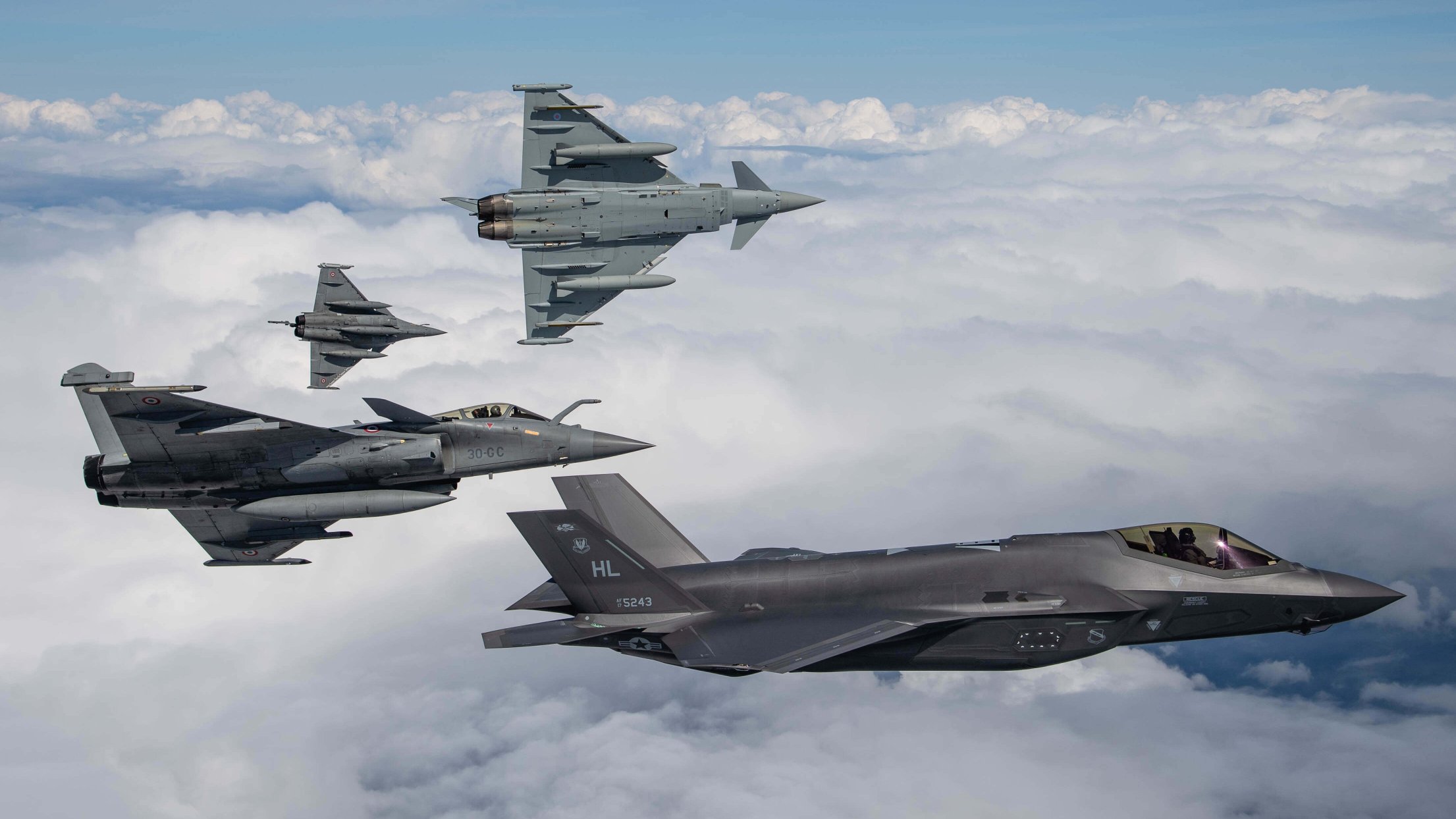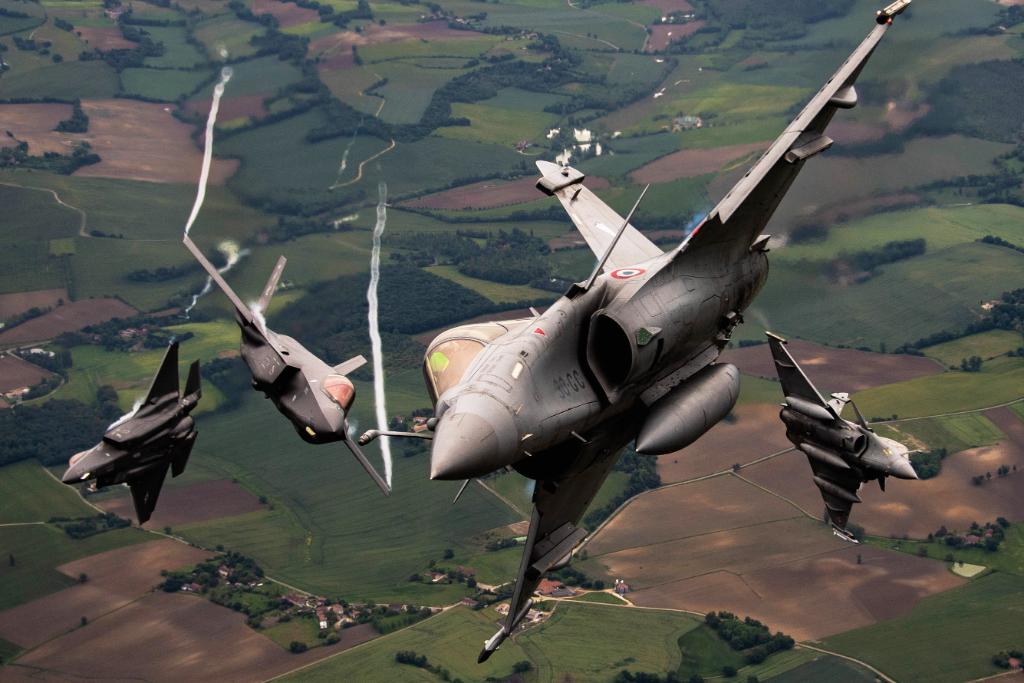The Russian invasion of Ukraine has sent ripples across Europe with countries seeking to strengthen their defenses and boost military cooperation with the United States.
France now looks to push for greater interoperability between the French Rafale jets and F-35 Joint Strike Fighter (JSF). Senior military officials from the United States and France meet every 18 months in a framework known as “operator engagement talks” to address operations and long-term requirements.
These talks are aimed at developing, maintaining, and improving mutually beneficial operational relationships with partner nations in order to increase interoperability in air, space, and cyberspace.
In an interview with Breaking Defense on February 19, ahead of Russia’s onslaught on Ukraine, Lt. Gen. Frédéric Parisot, Vice Chief of the French Air and Space Force, had expressed concern over interoperability between the two forces.
Parisot, who recently visited the US, highlighted the difficulties in integrating the fifth-generation F-35 aircraft with French networks.

Parisot is a Mirage 2000C pilot with more than 3000 flight hours and about 80 combat missions under his belt. He was the first French officer to be embedded in the Pentagon, having served as the liaison officer to the Chief of Staff of the USAF Strategic Studies Group “Checkmate” from 2008 to 2010.
“We would like to be able to operate in the same integrated way we did in 2018 during the raid against Syrian chemical capabilities,” he said. “I am not certain it is the case right now, as there are more and more F-35 squadrons within NATO and our interoperability between F-35s and Rafales is still a work in progress.”
“It is inconceivable to have a two-speed alliance separating F-35 fleets from the others and this issue of interoperability has been one of our priorities during this visit,” he explained.
Rafale’s Interoperability With F-35
In a range of international competitions, the F-35 and the Rafale have competed head-to-head, which Parisot acknowledged as a natural difference of agenda between operators and those focused on economic competition.
“F-35s and Rafales are ending up competing for the same export markets and this can sometimes constitute a break in the way the US and French Air Forces would like to conduct joint operations,” he said. The two sides now appear to be working on a solution that could result in a mutually acceptable technical solution for the two aircraft.
France, like most of its NATO allies, uses Link16 (Link 16 is a military tactical data link network used by NATO and nations allowed by the MIDS International Program Office (IPO). Over the last three years, Paris has been a strong proponent of adopting a European standard for a new military tactical data link network that is fully interoperable with the US.
Since the emphasis of French procurement has been on enhancing sovereign standards, the network would clearly differ from the MADL (Multifunction Advanced Data Link), currently employed by the F-35.

Thales was recently given a contract for the integration and support of SatCom aeronautic stations known as Mélissa. The purpose is to use the military constellation Syracuse IV to allow French Air and Space Force aviation assets to interact and exchange information via a shielded and hardened (against high-intensity threat) link.
These stations will be integrated with the Multi-Role Tanker Transport (MRTT) by 2025, enhancing its function as a critical C2 nod for FCAS (Future Combat Air System).
According to Parisot, the French network would be like another card that could be plugged into the F-35’s Communications, Navigation, and Identification (CNI) systems without requiring major changes to the aircraft’s internal systems.
This program includes software-defined radio technology to allow data fusion and communication (including Blue Tracking), boosting the level of integration among wingmen regardless of the air asset they operate.
In recent years, France and its allies have placed a high priority on enhancing fourth- and fifth-generation fighter jet interoperability, The EurAsian Times had previously reported.
At the Mont-de-Marsan Air Force Base in France, the ‘Atlantic Trident 21’ exercise featured simultaneous sorties by the F-35A Lightning II Joint Strike Fighter (JSF) and the Dassault Rafale fighters. In 2023, the United Kingdom will host the Atlantic Trident.
The China Factor
The Heifara-Wakea exercise, which took place last summer in the Pacific, was highlighted by Parisot. The French Air Force was also able to fly with the US Pacific Air Force’s F-22s in the region.
The latest meeting between the US and French military officials reaffirmed the shared desire to continue such exercises every year. A similar air drill from the French metropole to New Caledonia, a French territory comprising dozens of islands in the South Pacific, is already planned for this summer.
Instead of three Rafales, the exercise will now include six. The plan is to deploy up to 20 Rafales and 10 MRTT tankers by the end of the year, equating to an aircraft carrier.

The strategic goal, Parisot said, is to send a clear message to potential adversaries like China by demonstrating France’s ability to deploy substantial forces within a 20,000-kilometer range in 48 hours. A show of force that illustrates not just the FASF’s capacity to undertake a wide range of operations.
Furthermore, such operations enable the French Air and Space Force to strengthen its relationships with Rafale end-users along the road, with Indonesia being the latest addition in the “Rafale pearl necklace” that includes Egypt, Qatar, India, the United Arab Emirates, Greece, and Croatia.
- Contact the author at ashishmichel@gmail.com
- Follow EurAsian Times on Google News




